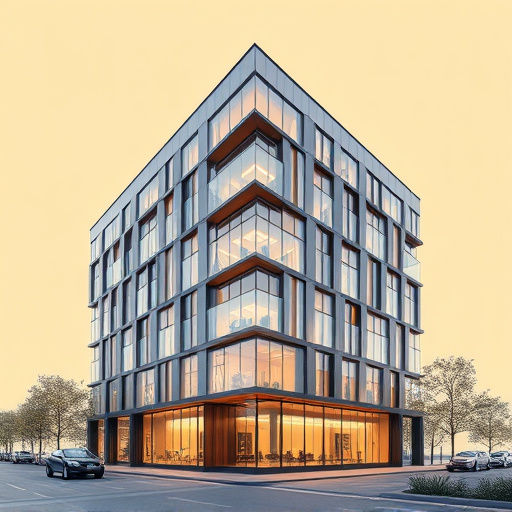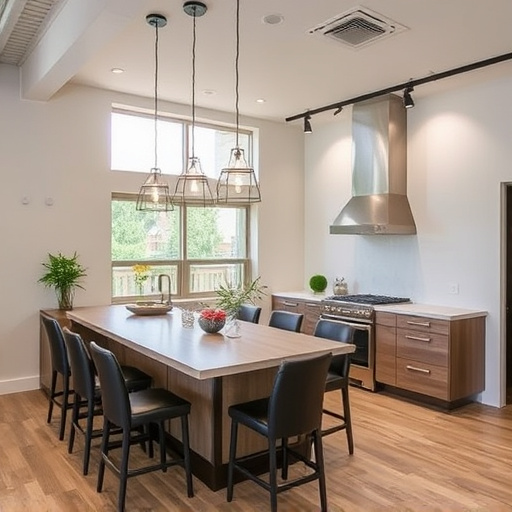Business remodels are strategic transformations that reevaluate and restructure operations to support growth. They involve careful planning, budget allocation, and resource management to enhance efficiency, customer experiences, and new opportunities. Companies can choose between full-scale office renovations or targeted kitchen remodeling based on specific needs. Successful business remodels drive future success, foster expansion, and maintain competitiveness in an evolving market. Measuring success involves assessing improvements in productivity, workflows, customer satisfaction, and financial performance.
“Business remodelling is not just about revamping your space; it’s a strategic move to fuel expansion. In today’s competitive landscape, understanding how to leverage a business remodel can be a game-changer. This article delves into the art of strategic planning through business remodels, highlighting key components that drive success. We’ll explore how these renovations impact and align with your growth goals, providing insights on measuring their effectiveness. From design to execution, discover how thoughtful business remodelling can transform your operations.”
- Understanding Business Remodels: A Strategic Approach
- Key Components of Successful Business Remodels
- Measuring Success: Evaluating Impact on Expansion Goals
Understanding Business Remodels: A Strategic Approach

Understanding business remodels is a strategic approach that involves reevaluating and restructuring existing operations to align with growth objectives. It’s more than just a physical transformation; it’s a comprehensive strategy that can enhance efficiency, improve customer experience, and open new avenues for expansion. A successful business remodel starts with identifying areas of improvement, whether it’s streamlining processes in your office space or revamping an outdated kitchen renovations to create a modern, inspiring workspace.
This process requires careful planning and consideration of various factors, including budget allocation, resource management, and the overall vision for the business. For instance, a company might opt for a complete office home renovation to accommodate a growing team or a targeted kitchen remodel to better serve clients, depending on their specific needs and goals. The key is to treat business remodels as an investment that will drive future success and ensure the enterprise remains competitive in an ever-evolving market.
Key Components of Successful Business Remodels

A successful business remodel is a strategic process that involves several key components to support and drive expansion goals. Firstly, a clear understanding of the company’s vision and objectives is essential. This includes identifying specific areas for growth, whether it’s entering new markets, enhancing customer experience, or improving operational efficiency. A well-defined plan ensures that the business remodel aligns perfectly with these aspirations.
Customized work is a cornerstone of any successful transformation. Tailoring solutions to meet unique business needs guarantees optimal results. For instance, home transformations can revolutionize how a company interacts with its clients, creating memorable experiences. Similarly, focusing on kitchen and bath renovations—a popular trend in recent times—can significantly impact employee productivity and customer satisfaction, thereby fostering expansion.
Measuring Success: Evaluating Impact on Expansion Goals

Measuring the success of a business remodel is key to evaluating its impact on expansion goals. It involves looking beyond aesthetic changes and delving into the operational improvements that drive growth. Metrics such as increased productivity, streamlined workflows, enhanced customer satisfaction, and improved financial performance are indicators of a successful business remodel. By quantifying these aspects, businesses can ascertain how well their renovation projects align with their strategic objectives for expansion.
For instance, a multiple room remodel might enhance collaboration among teams by redesigning open spaces, thereby fostering innovation and efficiency. Kitchen renovations can streamline food preparation processes, reducing costs and increasing capacity for catering to larger client bases. Whole house remodels, on the other hand, can introduce smart home technologies, offering opportunities for data-driven insights and personalized customer experiences that support business growth in competitive markets.
A well-executed business remodel is not just an aesthetic change; it’s a strategic maneuver that can significantly enhance expansion capabilities. By understanding the key components and measuring success against expansion goals, businesses can harness the power of remodels to create a competitive advantage in today’s dynamic market. Incorporating these principles ensures that any business remodel serves as a catalyst for growth, driving measurable results and fostering a robust, adaptable organization ready to tackle future challenges.














